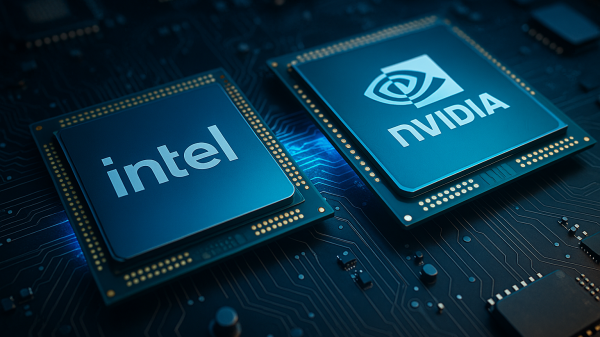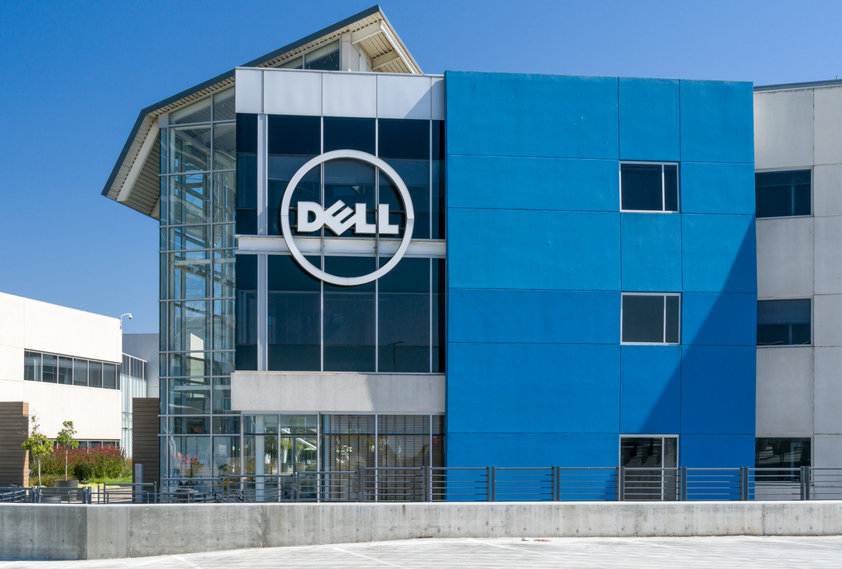Dell Technologies Inc. (NYSE: DELL) is in the spotlight today following Wells Fargo’s decision to reduce its price target on the company from $175 to $150, still reflecting a potential upside of 50% from its current price.
This adjustment comes amidst ongoing discussions about Dell’s AI server monetization versus margin concerns. According to Wells Fargo, while the AI server momentum is evident, persistent concerns over the AI server margin profile are casting a shadow over Dell’s near-term profitability.
The analysts also noted that Dell’s recent layoffs of 12,500 employees signify an effort to protect profitability as the company ramps up its AI contributions.
Dell’s focus on AI server monetization is crucial, especially as the company faces mixed demand signals in the traditional server market. AMD has reported positive demand signals, while Intel’s Xeon CPU server shipments declined by 22% year-over-year.
Dell’s traditional server orders, however, have grown year-over-year for two consecutive quarters, indicating some resilience in this segment.
The analysts expect Dell to highlight demand recovery in the second half of 2024, potentially leading to year-over-year revenue growth driven by its Infrastructure Solutions Group (ISG).
Views of other Wall Street firms
On August 13, analysts at Barclays upgraded Dell to an Equal-Weight rating, citing that much of the AI hype that had driven the stock’s earlier performance has now been priced out, reducing downside risk.
Despite ongoing concerns about Dell’s enterprise server and storage businesses, Barclays sees potential for AI to drive top-line growth, even though these AI-related revenues may come at lower margins.
This is particularly important as Dell navigates through a period of margin compression and strives to balance growth with profitability.
On the other hand, Bernstein remains cautiously optimistic about Dell’s potential for near-term AI server upside. In a research note published on August 12, the firm highlighted that while Dell’s first-quarter fiscal 2025 results disappointed relative to high expectations, the potential for AI server revenues to exceed expectations could help alleviate concerns about profitability.
However, there is a risk of a medium-term digestion period in AI infrastructure, which could impact Dell’s growth trajectory.
Q2 earnings expectations
As Dell prepares to report its Q2 2024 earnings on August 30, the consensus among analysts is that the company will post GAAP EPS of $0.92 on revenue of $24.11 billion. This represents an improvement from the previous year’s GAAP EPS of $0.64 on revenue of $23 billion.
However, it’s worth noting that 12 out of the 15 analysts covering Dell have revised their EPS estimates downward in the last 90 days, reflecting cautious sentiment ahead of the earnings release.
Focus on AI
Dell’s recent strategic shift towards prioritizing AI is also evident in its decision to reduce its sales team as the company refocuses its efforts on AI-driven offerings.
According to a memo obtained by Bloomberg, Dell aims to grow faster than the market by streamlining management layers and investing more in AI. This strategic pivot is seen as necessary for Dell to capitalize on the growing demand for AI capabilities in modern IT infrastructure.
From a fundamental perspective, Dell’s business is positioned at a critical juncture. The company’s focus on AI, coupled with its ongoing efforts to enhance its product offerings in the Infrastructure Solutions Group, could provide significant growth opportunities.
However, the company must also contend with challenges such as margin compression in AI servers and the competitive landscape in traditional servers and storage.
Looking ahead, Dell’s ability to navigate the cyclical nature of its business will be key. The company has faced headwinds in its Client Solutions Group, with flat sales in the first quarter of 2024 due to a more competitive pricing environment and an unfavorable product mix.
However, as the IT upgrade cycle progresses, there is potential for growth, particularly in the Infrastructure Solutions Group, where AI-related upgrades and storage demands could drive annual growth in the high teens.
Dell’s long-term growth prospects are closely tied to the broader adoption of AI and the need for data center modernization. The company is well-positioned to benefit from the expanding AI applications, with potential growth areas including hyper-converged infrastructure, software-defined storage, and AI-driven IT consulting solutions.
However, Dell must also manage risks related to economic downturns, intense competition, and supply chain disruptions, which could impact its ability to capitalize on these opportunities.
Valuation
Despite these risks, Dell’s current valuation suggests that the stock is trading near a cyclical low, offering a potential buying opportunity for investors. The company’s focus on AI and the anticipated recovery in its traditional server and storage businesses provide a solid foundation for future growth.
However, investors should remain cautious about the near-term challenges, particularly in terms of margin compression and the competitive landscape.
Despite the challenges, Dell’s forward price-to-earnings (P/E) ratio is lower than the sector median, making it a compelling investment for those who believe in the long-term potential of AI.
Dell’s cash flow positivity, dividend payments, and share buybacks further bolster its investment case, despite a heavier debt load compared to other large-cap AI players.
Now, let’s see what the charts have to say about Dell’s price trajectory and whether the technical indicators align with the fundamental outlook.
Bearish on daily charts
On the daily charts, Dell has made a classic head and shoulders pattern and broken below its neckline support, which indicates that it has entered bearish territory in the medium term.
DELL chart by TradingView
Considering that investors who have a bullish outlook on the company should refrain from buying the stock at current levels. A long position should only be considered if the stock starts trading above its 50-day moving average.
Traders who are bearish on the stock can short it at current levels near $104 with a stop loss above the recent swing high of $116.60. If the bearish momentum prevails it can again fall to its recent swing low near $86 where profits can be booked.
The post Wells Fargo reduces price target on Dell to $150: Time to hold or sell? appeared first on Invezz
























